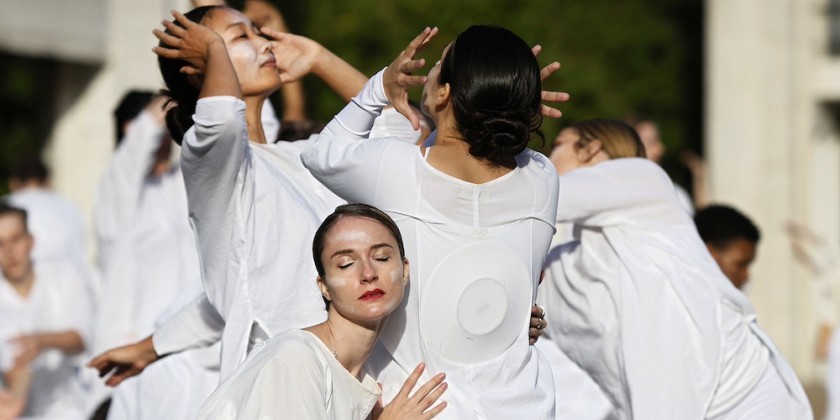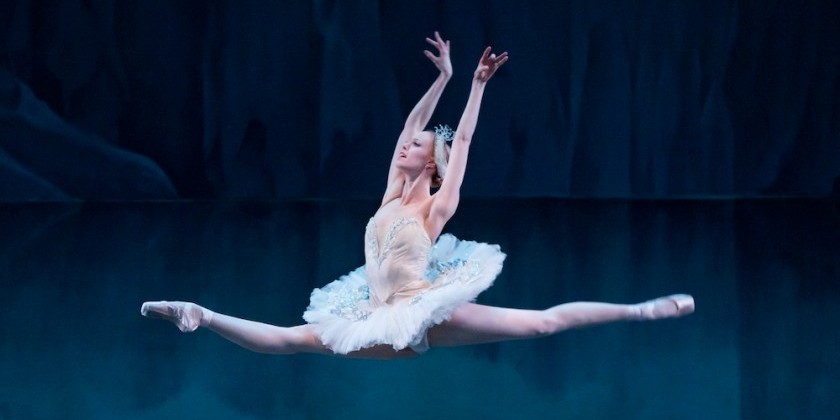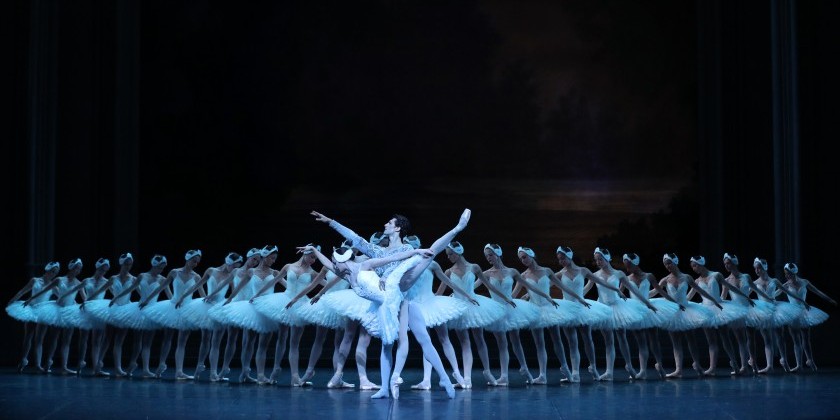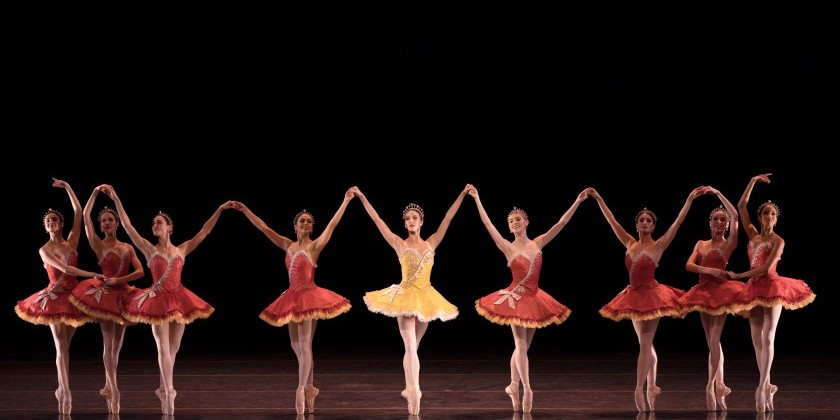TDE Asks Joffrey Ballet Artistic Director Ashley Wheater About the Company’s Return to New York After 22 Years Away

The Joffrey Ballet
March 29–April 2, 2017
David H. Koch Theater
Romeo and Juliet: March 29 and 31, April 1 and 2
Gala Evening of Ballets by Myles Thatcher, Yuri Possokhov and Christopher Wheeldon: March 30
For tickets, call the Koch Theater box office at 212-496-0600 or purchase online.
On March 29, the Joffrey Ballet of Chicago returns to New York, the city it once called home, with a five-day engagement at Lincoln Center. The marquee event is the New York premiere of Krzysztof Pastor’s modern retelling of Romeo and Juliet, which the Joffrey first performed in 2014.
Shakespeare set his tragic story of star-crossed lovers in 14th-century Verona. Pastor keeps the story in Italy but fast-forwards the action by 600 years: This Romeo and Juliet’s first act takes place in the 1930s, against the background of Mussolini and the start of World War Two. The drama then moves to the affluent postwar period, while the ballet’s wrenching final scenes take place in the present day.
The Joffrey’s Artistic Director, Ashley Wheater, is keen to introduce New Yorkers to Pastor’s staging — and excited to be bringing the company back to New York after a 22-year absence. Since taking over the reins a decade ago, Wheater has enlarged the Joffrey to 42 dancers and returned it to prominence after a rocky period when financial troubles nearly forced the company to close. The Dance Enthusiast recently spoke to Wheater about the Lincoln Center engagement.
Nicole Dekle Collins for The Dance Enthusiast: A lot of contemporary retellings of Romeo and Juliet have been created in the past 15 years. Why did you choose this version by Krzysztof Pastor for the Joffrey?
Ashley Wheater: Pastor worked with a really good dramaturge, Willem Bruls, and I find that his use of the language of classical ballet fits the particular way that he wanted to tell the story. In addition, his Romeo and Juliet sits really well on the company — it has a very useful energy. I also really like Tatyana [van Walsum]’s scenic design and costume designs. America had not seen this Romeo and Juliet, and so it was a wonderful opportunity for me to bring Krzysztof to the Joffrey [in 2014] and for people to see his work.

TDE: Did you see the work when the Scottish Ballet premiered it at the Edinburgh Festival in 2008?
AW: I had an opportunity to see it when the Scottish Ballet presented it. They had taken it all over Scotland and then they took it to London.
TDE: You have said that Pastor was partly inspired to make this ballet because of a real-life event that took place during the war between the Serbs and the Bosnians in the Balkans in the 1990s. Can you talk about that?
AW: During the Bosnian war in 1993, there was a story about a Christian [ethnically Serbian] man and a Muslim [ethnically Bosniak] woman who were in love, and their love came to fruition during the conflict. As a Christian and a Muslim, they were trying to find their place amongst all of this hostility. [While trying to flee the Bosnian capital, Sarajevo, which was under siege], they were shot down while crossing a bridge. Because of the war, it was three days before anyone could get to the couple to recover their bodies. Their story has been around and is well known in Sarajevo.
We look at Romeo and Juliet as a love story, but that love story is the greater because of the conflict that is surrounding two families. It could be opposing religions or something else. In the story of Romeo and Juliet, Shakespeare has given us so much food for thought as to why it is tragedy, and the tragedy is that we allowed conflict to come in the way of love. And I think that with this production, Krzysztof has been able to show not only the conflict within the Montagues and the Capulets but the conflict at the time that he set his Romeo and Juliet. In Act One, there is graphic video of the bombings in Bologna.
TDE: A potential drawback to setting the work in three periods is that you risk distancing the audience from the immediate story of these two lovers. But at the same time, I can see how Pastor’s approach might emphasize the larger tragedy in Shakespeare’s play, that the story of Romeo and Juliet is one that has been mercilessly repeated over time.
AW: Yes. I think the thing about the story of Romeo and Juliet is that it keeps being repeated, because we will always fall in love and we will always, for whatever reason, find hate and conflict. As for setting the ballet in three different eras, it doesn’t take me, personally, away from the story of Romeo and Juliet. If anything, it reinforces the power of love to survive even through the worst of humanity.

TDE: I and many others have missed the Joffrey since you moved to Chicago 22 years ago. Isn’t this the first time that the entire company has performed in New York since 1995?
AW: Yes. Part of the company came to Fall for Dance one year, and part of the company was at the Lincoln Center Ashton Festival, but this is the first visit by the full company since 1995. We’re incredibly excited to come back to New York City, which used to be our home. Obviously, Chicago is very much our home now. Without Chicago, and the support we’ve had here, I don’t know if the Joffrey would have survived. The city and its people have embraced the Joffrey and allowed it to absolutely flourish.
What really changed for the Joffrey when the company moved to Chicago is that we are the resident ballet company here. As much as we tour, we’re also the resident company, so that changes what your subscription looks like. We’re serving many different purposes. In Chicago, yes, we have done Giselle and Don Quixote and Romeo and Juliet and Sylvia and Swan Lake and will continue to do new full-length work. But we’ve also done a lot of wonderful work by young choreographers.
TDE: The Joffrey was beloved by New York audiences in part because it performed ballets that weren’t done by the other New York–based troupes. What is your vision for the troupe’s repertoire today?
AW: The thing about the Joffrey is that it’s not a 19th-century-classical-ballet company. It’s also not the company of George Balanchine. The Joffrey has always had its own special place. I danced in the Joffrey in the 1980s under Robert Joffrey, who was the man who put the stamp on the company. He was not afraid to give opportunity to the unknown: Joffrey with Twyla Tharp, and Joffrey with Kurt Jooss and The Green Table. And then taking the bold move to re-create Nijinsky’s Le Sacre du Printemps when nobody knew whether it would be a success or not. But it was an endeavor that he thought was worthwhile.
The Joffrey Ballet today is still giving opportunity to young, up-and-coming choreographers: Myles Thatcher has done a couple of works for the company, and Alexander Ekman, Annabelle Lopez Ochoa and Stephanie Martinez have also created works here. At the Joffrey, the language of classical ballet is our core, our center and our foundation, but it is not our circumference. The Joffrey has always been a company that embraced dance in the widest possible way.















